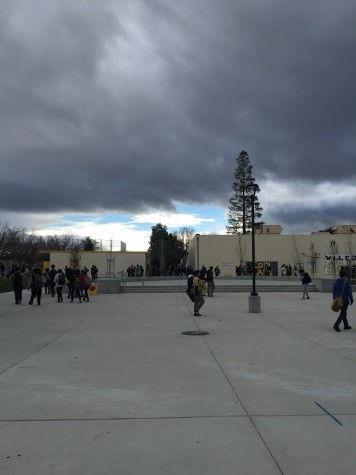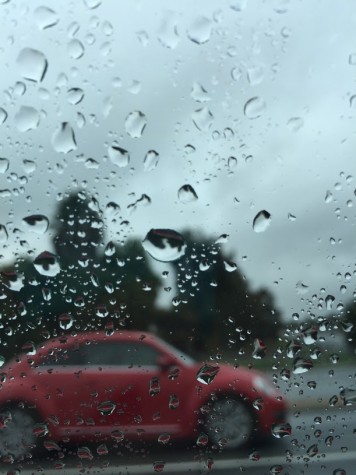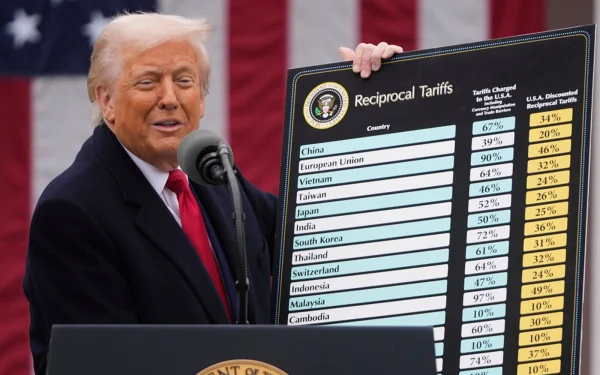El Nino vs the Drought

The El Nino has delivered some much needed rain and precipitation to California this season, and it will continue, subduing into late winter and the beginning of spring. The El Nino, though, is far from ending the drought. Thus, it is crucial to keep up water saving methods such as using shower buckets and timers, reducing toilet flushing, and washing full loads of dishes and laundry. The Silicon Valley Water District Monthly Newsletter said, “after above average rainfall last month, a record warm February offers us a dose of reality–the future of water in California is unpredictable.”
So far the state has received a mere 32.9 inches of precipitation during this water year, according to the California Department of Water Resources. They also have recorded that since the 2011/2012 water year (water years are measured from October to October), California has had below average annual precipitation. That amounts to at least five years of drought. During the 2011/2012 water year, California’s total precipitation was 41.6 inches, which is 8.4 inches shy of the 1922-1998 average precipitation of fifty inches. The 2012/2013 California water year saw a total of 44.3 inches of precipitation, which is 5.7 inches shy of the average.
During the driest water year of this drought, 2013/2014, there were only 31.3 inches of precipitation, which left the state 18.7 inches short of the average. The worst of these drought years was 2013/2014, which was the third driest year on record, going all the way back to 1923. Last water year, 2014/2015, California had only 37.2 inches of precipitation, that is 12.8 inches less than the average. Already only four months into this water year, California (still in a drought) has had 1.6 more inches of precipitation than the entire water year of 2013/2014. All in all, this drought has left the state in need of at least 45.6 inches in order to meet the annual average of 1992-1998.
Imagine the entire state of California is totally flat. Now imagine there is a giant tank of water that sits on top of it. The amount of water needed to end the drought would fill that tank up to 45.6 inches, which is about waist deep on an average person. That would be 55,838,622 gallons of water. To emerge from the drought, California needs the equivalent of an extra year of rain without the chaos and natural disasters that 45.6 inches of water over 163,696 square miles would bring.
Imagine that next year, water year 2016/2017, matched the wettest year on record which was 1982/1983, and there were 88.5 inches of precipitation. That is 38.5 inches toward the 45.6 we are currently short. In that instance we would need only 7.1 extra inches of rain to the average fifty inches to be out of the drought. That has major drawbacks though. Serious flooding causes damage that can put dams at risk, and inflict damage upon valleys, such as the Silicon Valley. Additionally, high levels of precipitation cause landslides that are extremely dangerous. During January of 1982, there were thirty three storm related deaths according to History.com. A two year plan for ending the drought is not worth the lives of thirty three people.

For sake of argument, let us round the needed 45.6 inches to up fifty inches. An increase of equal amounts of precipitation over two, five, or ten years, could bring us out of the drought. An increase of twenty five inches for two years would bring the total water year precipitation to seventy five inches. An increase of five inches per year (increasing annual precipitation to fifty five inches) over ten years would do the trick just fine but a decade is an awful long time to wait to recover from a drought. Ideally increasing the annual water year precipitation by ten inches to sixty inches per year over five years would balance the length of time needed for drought recovery and the dangers of flooding and landslides. All this is assuming that we already meet the average of fifty inches of precipitation a year. If not, if we continue with a drought average of 38.6 inches of precipitation per water year then we would need to add 11.4 inches to each of those numbers.
The problem then is how do you increase the precipitation? The answer: Cloud seeding. According to Weather Modification Incorporated, “Weather modification, commonly known as cloud seeding, is the application of scientific technology that can enhance a cloud’s ability to produce precipitation.” According to QUEST, a subsidiary of KQED, and Jeff Tilley who runs a cloud seeding program in Nevada, it works like this: Precipitation forms on dust and other particles in clouds. Without it, “you have these very static, dead clouds that don’t precipitate, don’t produce any water and just keep moving right through,” Tilley says.
What scientists do then is inject these clouds with silver iodide particles for the water to bond with. Ultimately “it can make a difference.” Tilley says over the course of a season, “What we find is a range of anywhere between eight and fifteen percent increase in water.” If we got cloud seeding to work all over California despite the fact it needs special clouds, temperatures and wind conditions, we could see an improvement of potentially fifteen percent. Right now, California needs a twenty three percent increase to make it from drought average to annual water year precipitation, of 38.6 inches to the fifty average inches. Fifteen percent leaves us with only an eight percent deficit of annual precipitation, we would make it to forty six inches of precipitation per water year. And scientific solutions to the California drought improve all the time, but clearly we are in it for the long haul. Stay strong Californians. Remember brown is the new green, and keep conserving.





